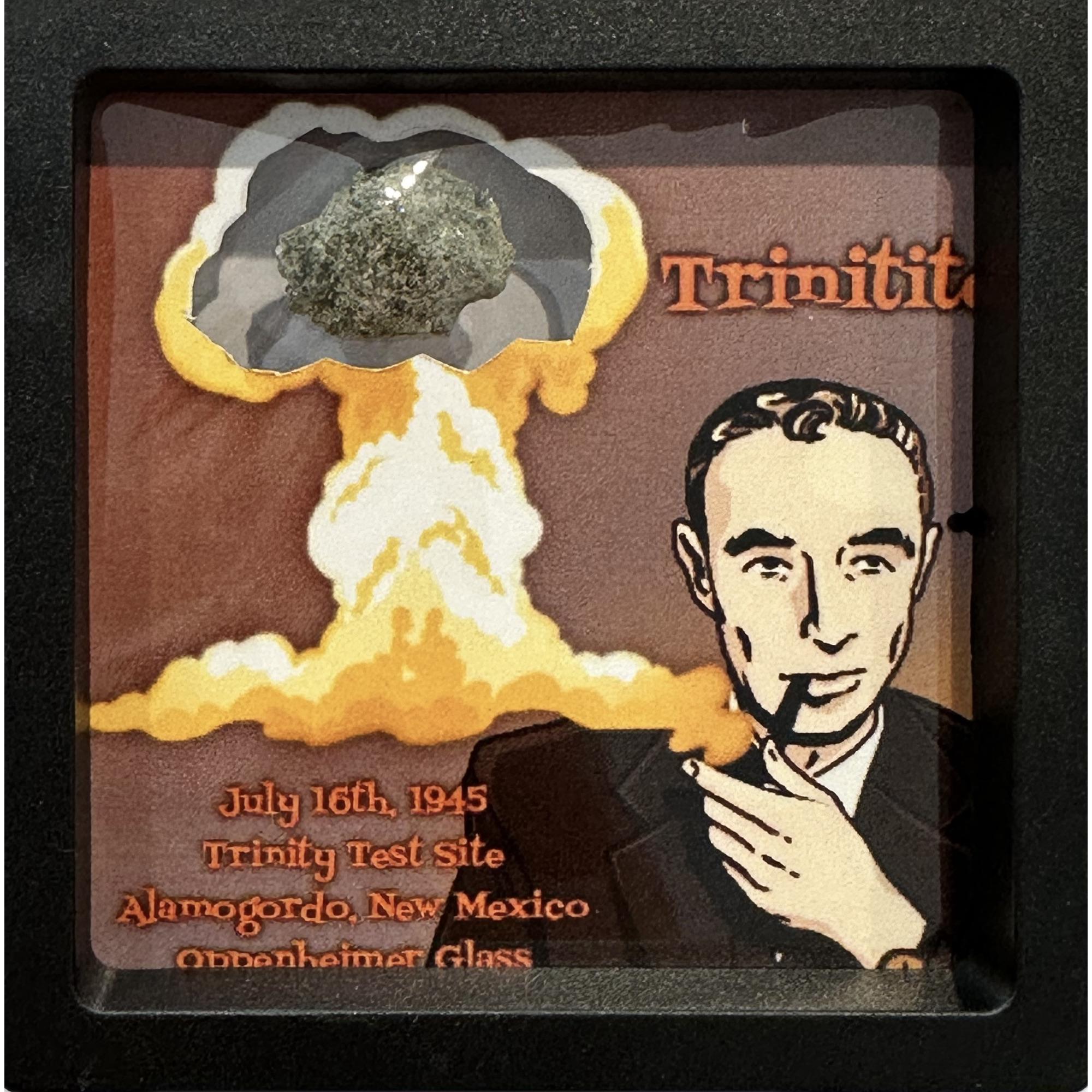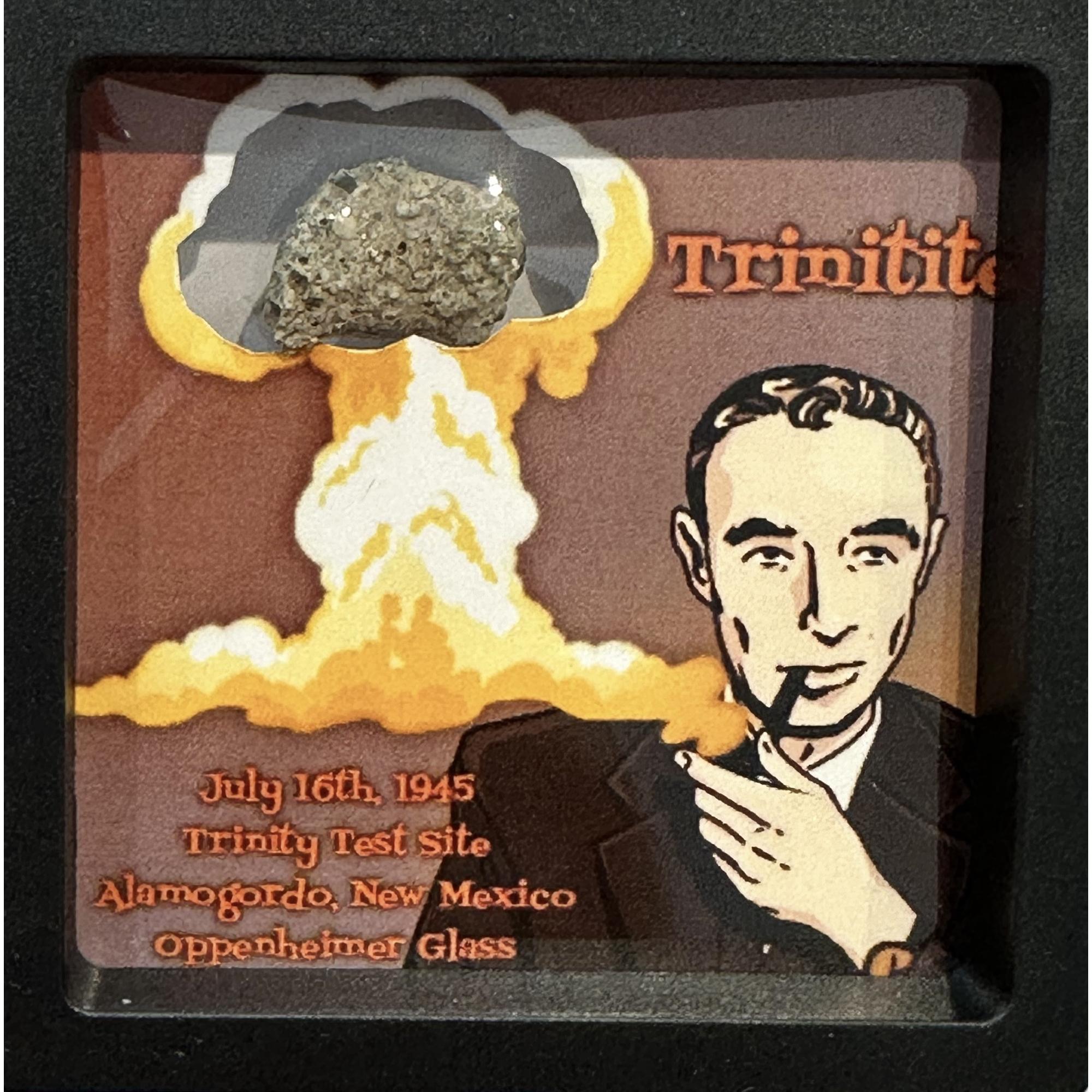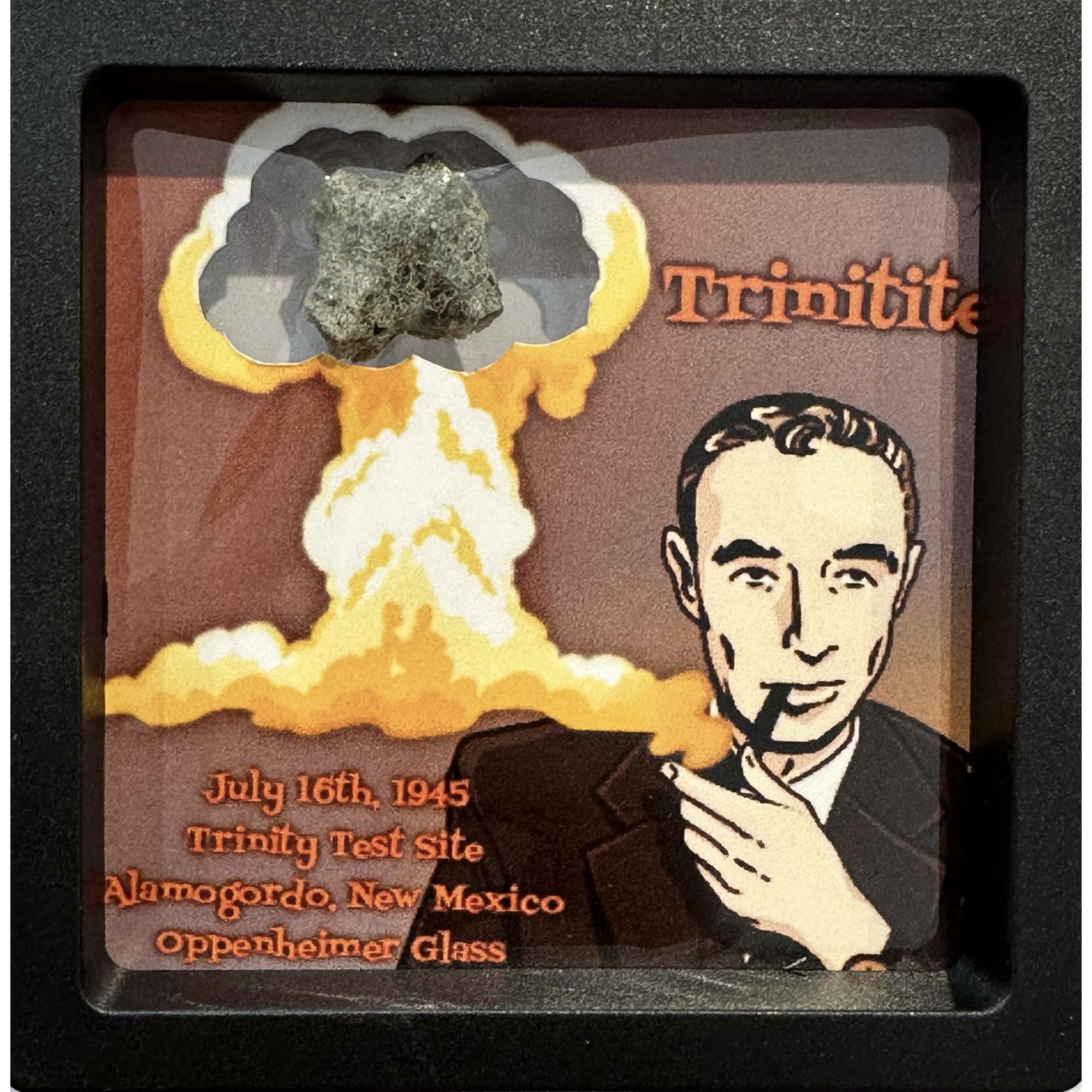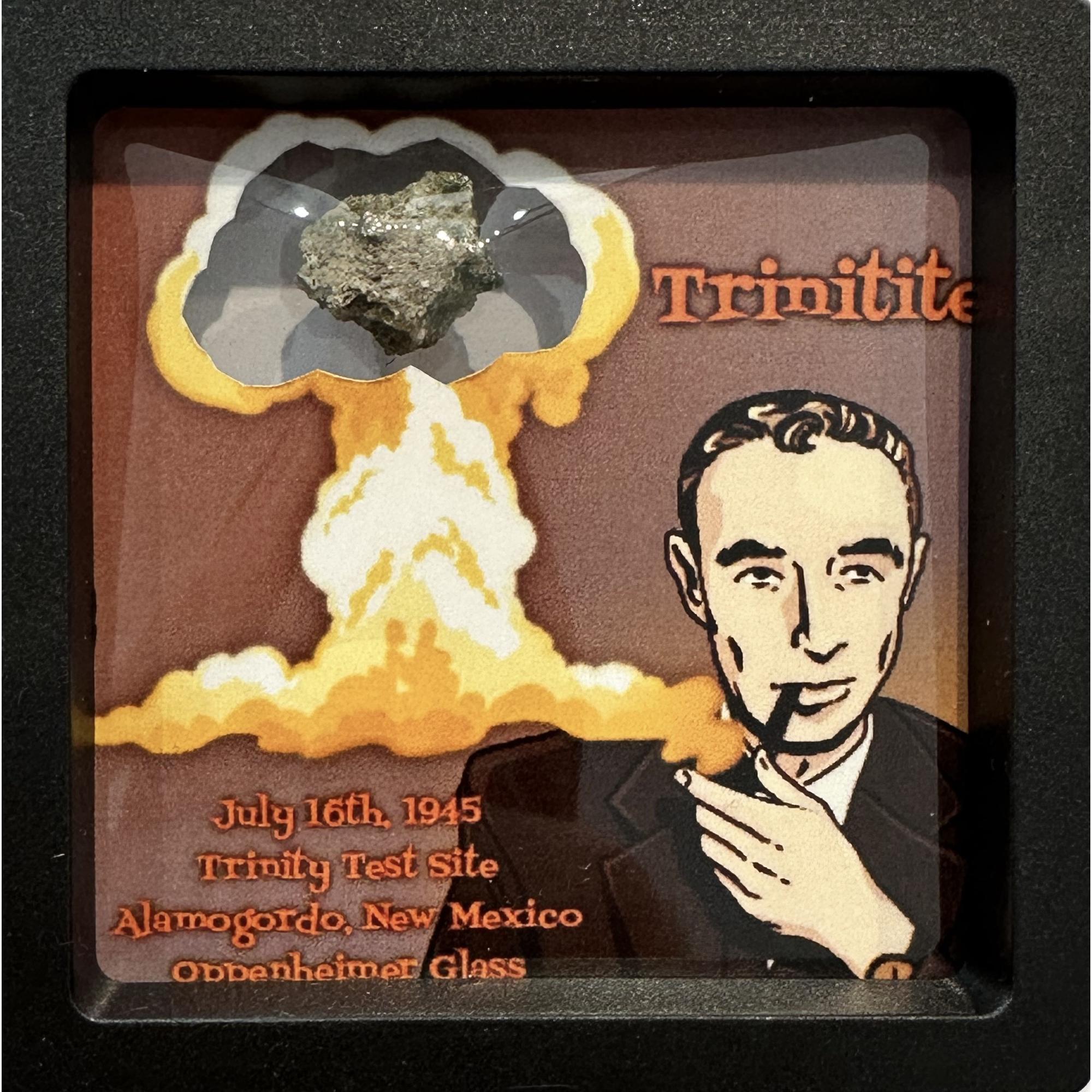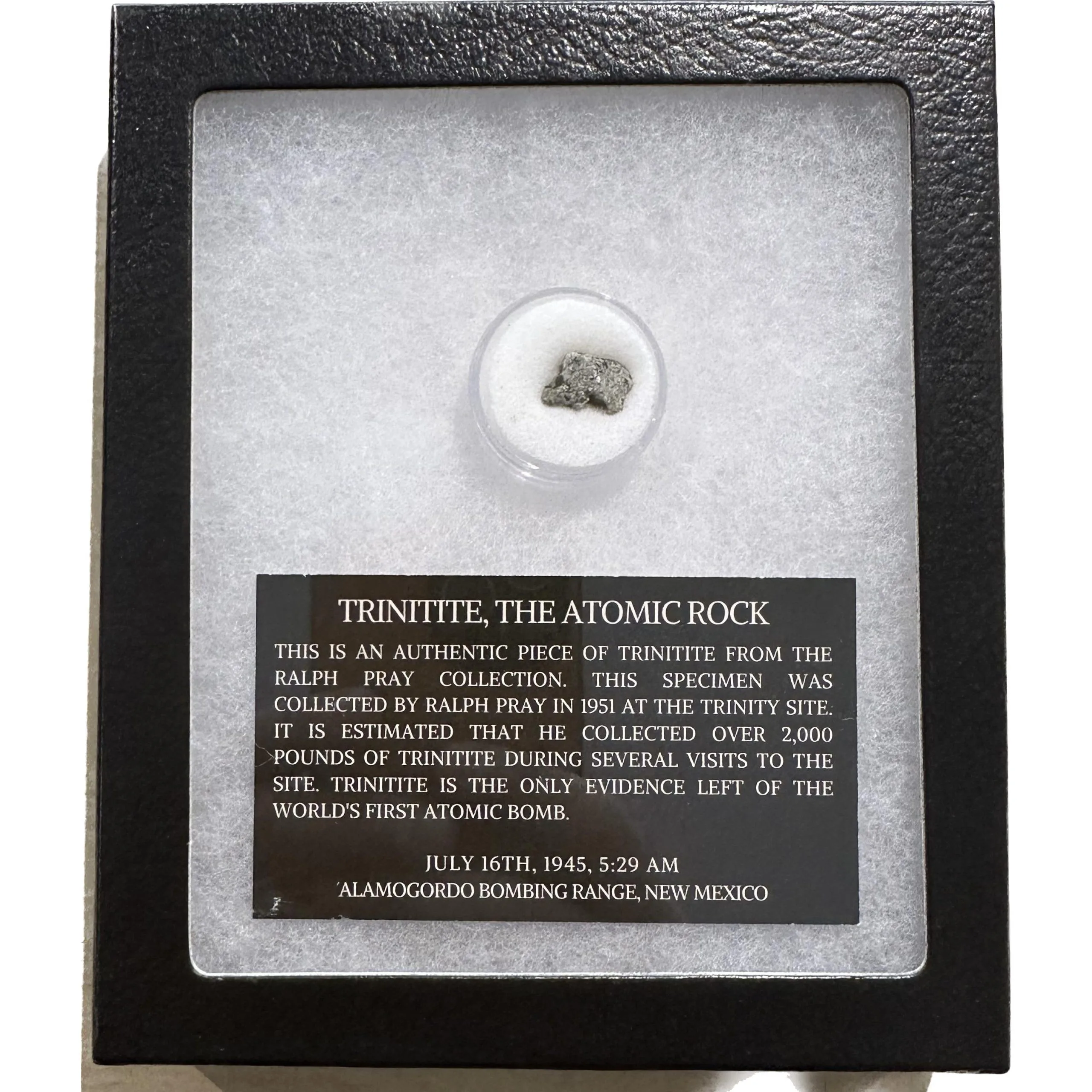Showing all 18 results
Trinitite is a unique and historically significant material that originated from the first-ever nuclear test explosion, code-named Trinity, which took place on July 16, 1945, in the New Mexico desert as part of the Manhattan Project. This explosion marked the dawn of the nuclear age and the beginning of a new era in human history. Trinitite itself is a form of glassy residue created when the intense heat of the detonation melted the desert sand, rocks, and soil, fusing them together.
The name “Trinitite” is derived from the Trinity test site and the suffix “-ite” commonly used in mineral names. It comes in various colors, ranging from light green to dark brown, depending on the composition of the local soil and the intensity of the blast. Initially, Trinitite was thought to be radioactive due to its origin in a nuclear explosion. However, subsequent testing revealed that most Trinitite is only slightly radioactive and safe for handling.
Trinitite is of interest to scientists, historians, and collectors alike. From a scientific perspective, it provides valuable insights into the behavior of materials under extreme conditions, such as those encountered during a nuclear explosion. Studies of Trinitite have contributed to our understanding of nuclear physics, geology, and the effects of radiation on materials.
Historically, Trinitite serves as a tangible reminder of the dawn of the nuclear age and the profound impact of the Manhattan Project on global affairs. It represents a pivotal moment in human history, when the destructive power of nuclear weapons was first unleashed. As such, Trinitite holds cultural significance and is often collected as a relic of this historic event.
Collectors and enthusiasts also value Trinitite for its unique aesthetic qualities. Its glassy texture and distinctive colors make it a visually striking material, suitable for display in museums, private collections, and even jewelry.











